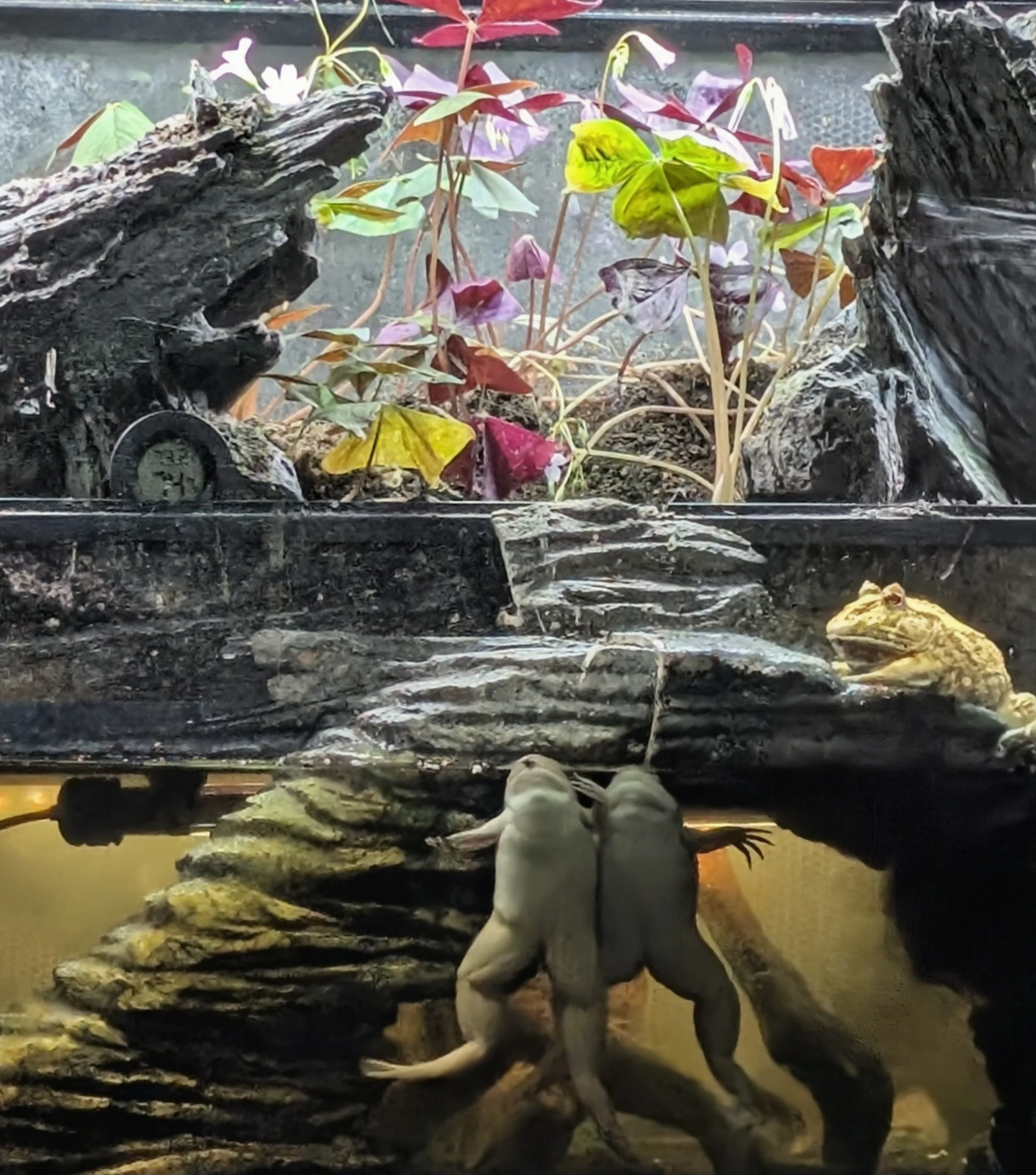⭐ Albino African Clawed Frog
(Xenopus laevis)
🐸 What They Are
Albino African clawed frogs are a color-mutation of the regular African clawed frog.
Instead of the typical gray-green mottled coloration, albinos are white to light pink with red or pink eyes due to lack of pigmentation. They are the same species—just visually different.
🌍 Natural History
Species: Xenopus laevis
Origin: Southern Africa
Habitat: Still or slow-moving freshwater ponds, rivers, and marshes
Lifestyle: Fully aquatic; they almost never leave the water
Lifespan: 10–20 years in captivity (sometimes longer with excellent care)
🧬 Albino Traits
No melanin → gives them their pinkish skin & red eyes
More sensitive to bright light
More visible in water → so they rely heavily on lateral line organs and water vibration sensing to “feel” their environment
Behaviorally the same as normal African clawed frogs
🧠 Behavior
These frogs are:
Very active and curious
Opportunistic eaters (they will eat anything they can fit in their mouth—including tankmates)
Strong swimmers that can dart quickly
Known to “beg” for food at the glass once they learn your routine
Mostly nocturnal, but active day and night
🍽️ Diet
In captivity they do best with:
High-quality sinking frog/tadpole pellets
Nightcrawlers or earthworms
Bloodworms
Brine shrimp
Occasional small feeder fish (not required)
Avoid fatty meats or feeder fish raised in poor conditions
They eat by stuffing food into their mouths with their forearms—a trademark Xenopus behavior!
🏡 Tank Setup
Fully aquatic tank, minimum 10 gallons for 1–2 frogs
No gravel (they swallow it) → use fine sand or bare bottom
Provide hides like PVC pipes or smooth caves
Adjustable heater to keep the water 68–75°F
Strong lid—they will jump!
Strong filter but low-flow (they dislike strong currents)
💧 Water Requirements
Dechlorinated water only
pH 6.5–8.0
Weekly 20–30% water changes
They produce a LOT of waste → filtration is important
Temperature stability matters more than exact number
⚠️ Compatibility
Important: African clawed frogs should not be housed with:
Fish (they will eat them)
Small frogs (they’ll eat them too)
Newts or salamanders (can carry dangerous pathogens to each other)
Best kept in a species-only tank.
🐾 Fun Facts
They have keratinized claws on their back feet—used for digging and defense
They can regenerate their limbs when young
They were once used worldwide as pregnancy test animals (bioassay!)
Albinos are easier to see underwater, which is why labs prefer them
They “sing” softly underwater—males make a buzzing call




